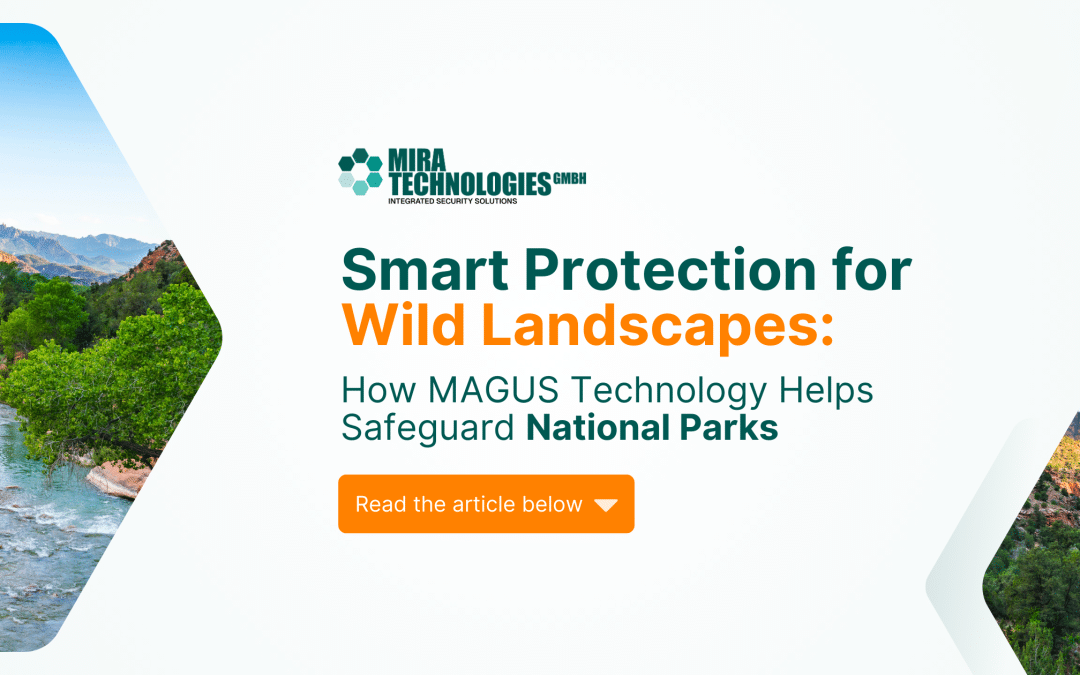Smarter Borders: How Technology and Strategy Must Work Together
Overview
Securing a national border today is far more complex than building a wall, a fence, or installing a row of cameras. Modern challenges — from illegal migration to organized crime and smuggling — demand more sophisticated solutions. Static defenses alone are no longer sufficient. As threats evolve, so must the methods to detect and deter them.
A central question arises for policymakers and security professionals: Is a single technology enough to protect a border?
The answer, based on years of field experience and case studies, is a clear no. Effective border security requires a multilayered detection and response ecosystem, one that combines different technologies to close every possible gap.
Is One System Enough? The Risk of Single-Point Failures
While traditional security measures such as walls, fences, and video surveillance cameras have been widely used, modern border breaches often involve sophisticated tactics to evade detection. Smugglers and illegal crossers exploit blind spots, low-visibility conditions, and sensor limitations.
For example, cameras, while vital, have clear constraints: they rely heavily on lighting and line-of-sight. Environmental factors such as fog, heavy rain, or rugged terrain can drastically reduce their effectiveness. Similarly, while radars can detect movement over long distances, they may struggle to differentiate between animals, humans, and vehicles without complementary systems.
The result? A critical need for layered, overlapping security solutions.
Layered Security: Defense in Depth
The concept of layered security — often called “defense in depth” — offers a robust alternative. By deploying multiple overlapping technologies and systems, each with distinct capabilities, authorities can dramatically increase the chances of detecting and intercepting threats.
Instead of relying on one sensor, one fence, or one patrol, a layered approach ensures that even if one line of defense is compromised, others remain active and effective. Redundancy isn’t a weakness — it’s a design principle that recognizes the unpredictability of real-world threats.
Key Layers of an Effective Border Protection System
1. Buried Sensors (GeoPS), Fiber Optics (FOPS), and Sensitive Cables (FPS)
Installed underground, these systems detect subtle vibrations caused by movement — footsteps, digging, or vehicles. Sensitive fiber optic cables can differentiate between an animal and a human intruder based on signal patterns. When integrated properly, they offer a hidden, hard-to-bypass detection layer.
2. Radars and LIDAR Systems
Radars provide wide-area monitoring, detecting movement across open terrain day and night, in all weather conditions. LIDAR adds high-resolution scanning, capable of creating detailed images and movement profiles. Together, they extend surveillance over vast areas that static cameras cannot adequately cover.
3. Video Surveillance and Smart CCTV
Fixed and mobile cameras, enhanced with AI-based analytics, recognize suspicious behavior patterns and track movement automatically. Thermal imaging can reveal activity even in total darkness. However, cameras must be strategically placed and actively monitored to be truly effective.
4. Human Being Detection Systems (MAGUS HBD)
Specialized technologies such as vibration-based heartbeat detectors (e.g., Magus HBD) are critical at vehicle checkpoints, container inspections, and border crossings. These systems can detect hidden individuals without needing invasive searches, providing a fast and discreet screening tool.
5. Mobile Patrol Units and Drones
Ground patrols remain an essential human element. Drones add another dynamic layer, quickly covering difficult terrain, following suspicious activity in real time, and providing immediate eyes on the ground where sensors raise an alarm.
6. Command and Control Centers (MAGUS CC)
At the heart of an integrated system lies a command center that collects, filters, and visualizes data from all sensors and surveillance systems. Only with centralized situational awareness can security teams make fast, informed decisions.
Choosing the Right Configuration: One Size Does Not Fit All
Every border environment is different: desert, forest, mountain, urban frontier — each presents unique operational challenges. There is no universal “perfect solution.”
Selecting the right combination of technologies requires professional assessment, balancing factors like terrain, threat profiles, climate conditions, and operational logistics.
Sometimes buried fiber optics are ideal; in others, wide-area radar combined with drones may be the better choice. Critical to success is the expertise in designing a tailored multilayer solution that fits local needs and realities.
Case Example: Lessons from the Field
Across Europe, multi-agency border security programs have emphasized the necessity of multi-layered detection solutions. One of the most prominent initiatives, the European Border Surveillance System (EUROSUR), integrates various technologies such as coastal radars, ground sensors, fiber optic monitoring, mobile surveillance units, and satellite imagery. This system, coordinated by Frontex (the European Border and Coast Guard Agency), enhances situational awareness and response capabilities across land and maritime borders.
Similarly, national projects at critical borders demonstrate the effectiveness of combining buried sensors, surveillance radars, and video systems to detect and deter illegal crossings.
These examples underline a key lesson: single-layer detection leaves gaps; multiple, integrated layers close them.
Professional Configuration is Critical
Choosing the right combination of technologies is not a one-size-fits-all process. Each border environment — whether desert, forest, mountain, or coastline — poses unique challenges. Therefore, security professionals must carefully assess threats, terrain, weather conditions, and operational goals before designing a solution.
For example, a desert border might prioritize radar and fiber optics, while a heavily forested frontier may benefit more from buried seismic sensors combined with LiDAR. A modular, customizable approach ensures that resources are allocated efficiently, and that no single technology is overburdened.
Professional integrators and security consultants bring value by designing tailored architectures, avoiding costly redundancies, and ensuring seamless interoperability between various technologies.
Conclusion
Modern border protection requires more than just fences and cameras. In an era of evolving threats, a resilient, effective defense strategy depends on deploying multiple layers of complementary technologies, each covering the gaps left by the others.
Relying on a single system is not just risky — it’s inadequate. The future of border security lies in integrated solutions that combine buried sensors, fiber optics, radars, LiDARs, and advanced video analytics to create comprehensive, intelligent, and adaptable security networks.
The right technology, properly configured by experts, ensures not just detection, but timely action and secure borders.
🔹 Ready to Upgrade Your Security? Let’s Talk!
Visit us on our Website
Ask us via Email
Stay updated with our news on LinkedIn







